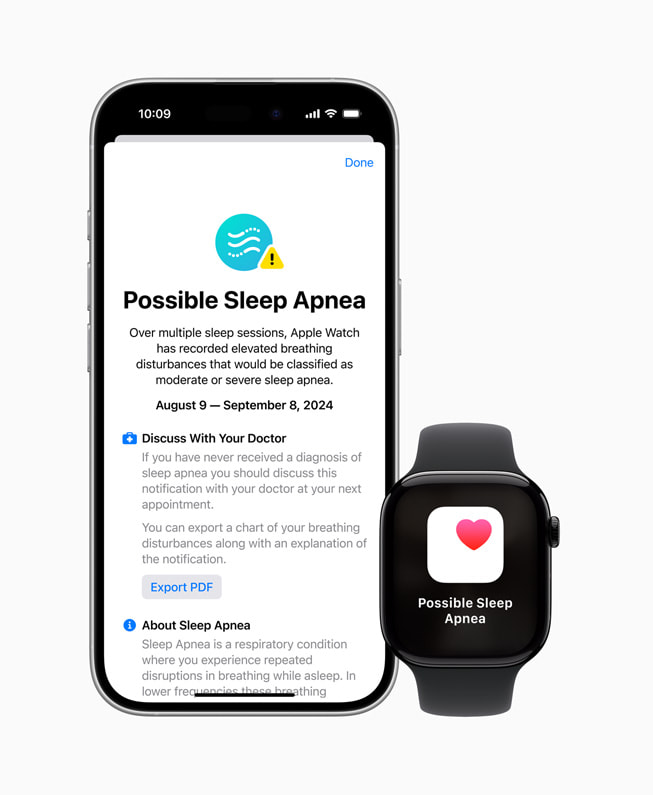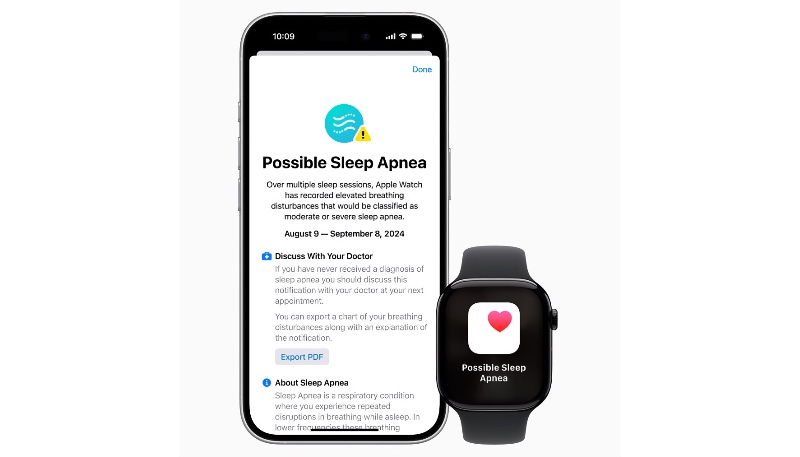Health Canada has published approval of the watchOS 11 sleep apnea detection features on the Apple Watch Series 9, Apple Watch Series 10, and Apple Watch Ultra 2. Apple launched the feature in the United States and more than 150 other countries and regions around the globe earlier this month.
As reported by MacRumors, Apple is now permitted to offer the feature in Canada, although it is hasn’t been announced when Apple will expand the feature to Canada.
Sleep apnea is a potentially serious health disorder where a person experiences repetitive pauses in breathing, periods of shallow breathing, or collapse of the upper airway during sleep results in poor ventilation and sleep disruption. Each pause in breathing can last from a few seconds to a few minutes and usually occurs numerous times per night. A choking or snorting sound may occur as breathing resumes. Common sleep apnea symptoms include daytime sleepiness, snoring, and non restful sleep despite adequate sleep time. Other symptoms can include a frustrated spouse, which is how I found out that I might have sleep apnea. Happily there are treatments for sleep apnea, including the use of a CPAP machine and mask, which uses a stream of humidified air to keep the user’s airway open.
How the Apple Watch Detects Sleep Apnea
Apple Watch sleep apnea detection uses a new Breathing Disturbances metric, that uses the accelerometer to detect small movements at the wrist associated with interruptions to normal respiratory patterns during sleep. Every 30 days, Apple Watch will analyze breathing disturbance data and notify users if it shows consistent signs of moderate to severe sleep apnea so they can speak to their doctor about next steps, including potential diagnosis and treatment.
Breathing Disturbances can be used to determine restfulness of sleep. Breathing Disturbances can be influenced by alcohol, medications, sleep position, and more. Users can view their nightly Breathing Disturbances in the Health app, where they are classified as elevated or not elevated, and can be viewed over a one-month, six-month, or one-year period.

Users can also export a PDF that shows when sleep apnea may have occurred, three months of breathing disturbance data, and additional information. This makes it easy to share the information with healthcare providers. The Health app also offers educational articles to provide more information about sleep apnea.
Apple developed the sleep apnea notification algorithm by using advanced machine learning and an extensive data set of clinical-grade sleep apnea tests. The feature was then confirmed by a clinical study, in which every participant identified by the algorithm had at least mild sleep apnea.


